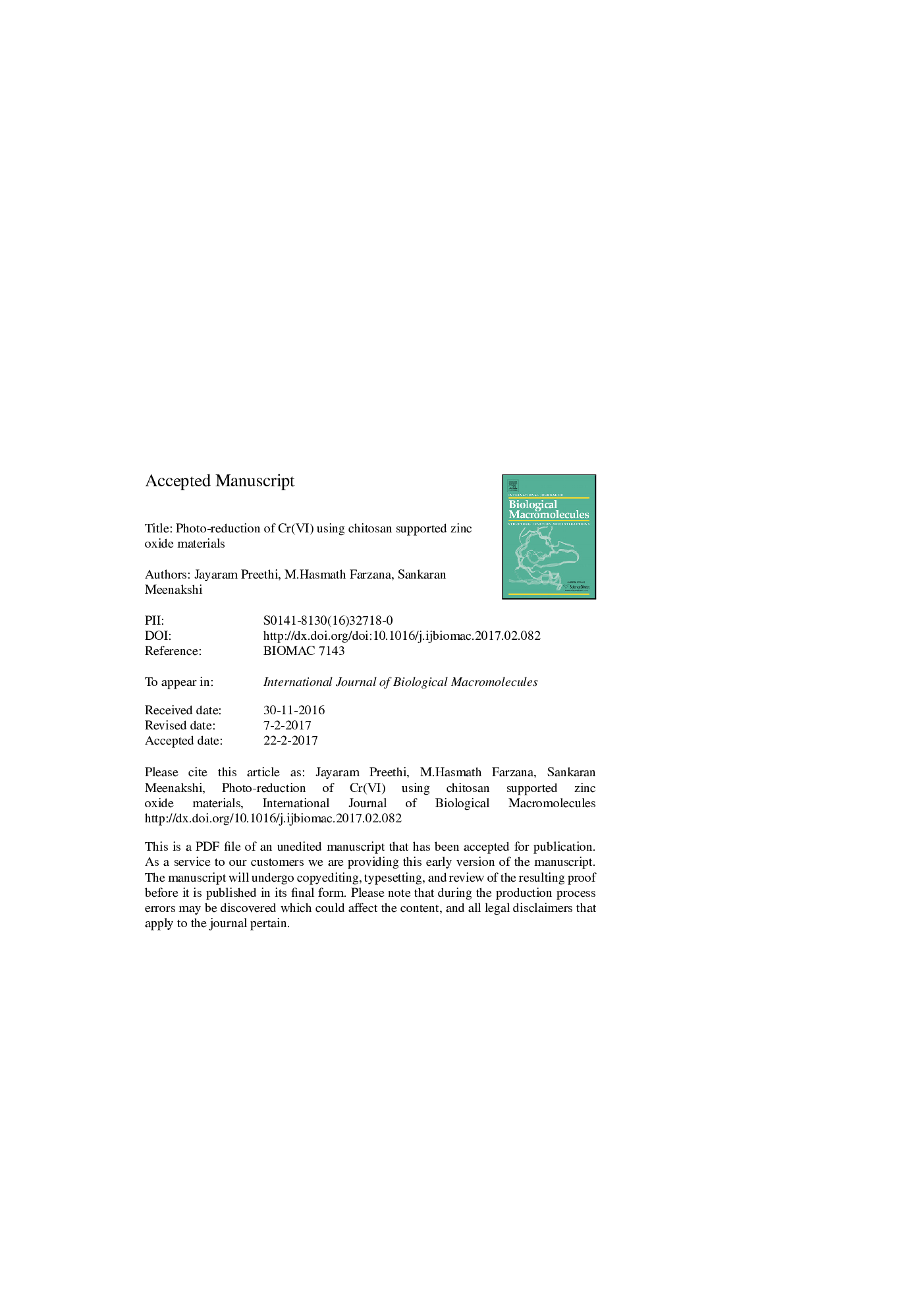| Article ID | Journal | Published Year | Pages | File Type |
|---|---|---|---|---|
| 5511590 | International Journal of Biological Macromolecules | 2017 | 40 Pages |
Abstract
Investigations were made in order to evaluate the photocatalytic reduction of hexavalent chromium (Cr(VI)) using zinc oxide (ZnO), zinc oxide impregnated chitosan beads (ZCB) and chitosan/zinc oxide composite (CZC) under UV light irradiation. The as-synthesized chitosan modified zinc oxide materials were characterized using FTIR, SEM, EDAX and EPR studies. Photocatalytic experiments were conducted to optimize various parameters viz., irradiation time, the amount of catalyst, pH, concentration of H2O2, light intensity, co-ions, initial concentration of Cr(VI) under UV irradiation. The maximum reduction percentage of Cr(VI) using ZCB and CZC under UV light was obtained at 60Â min of irradiation time. CZC possesses higher percentage of 99.8% Cr(VI) reduction compared to ZCB which in turn higher than ZnO under UV light irradiation. The kinetics of photo-reduction of Cr(VI) is explained on the basis of Langmuir-Hinshelwood mechanism. The kinetic studies demonstrated that the photocatalytic reactions followed the pseudo-first-order model. The reusability of as-synthesized ZCB and CZC was assessed. The Cr(VI) reduction by ZCB and CZC under UV light is governed by adsorption coupled photocatalytic reduction. The suitability of ZCB and CZC was checked by employing these catalysts with the effluent taken from a nearby industrial area using photocatalytic method.
Related Topics
Life Sciences
Biochemistry, Genetics and Molecular Biology
Biochemistry
Authors
Jayaram Preethi, M. Hasmath Farzana, Sankaran Meenakshi,
